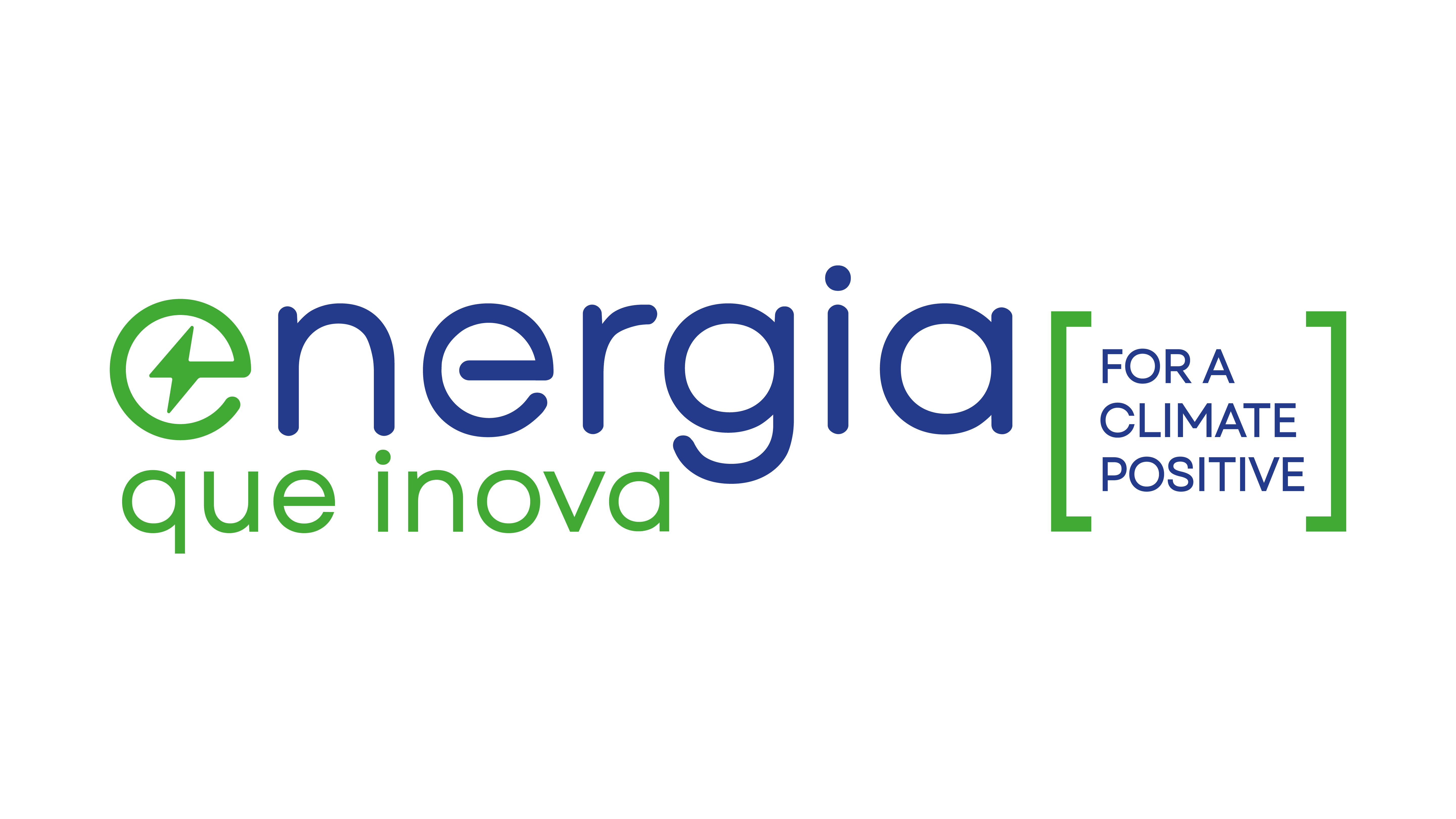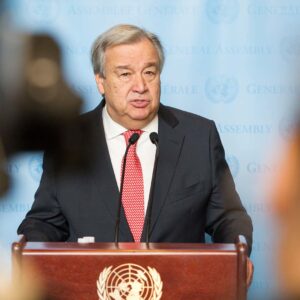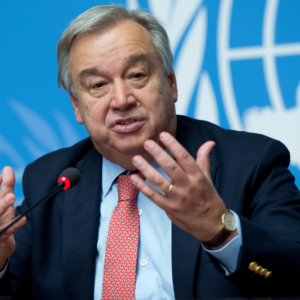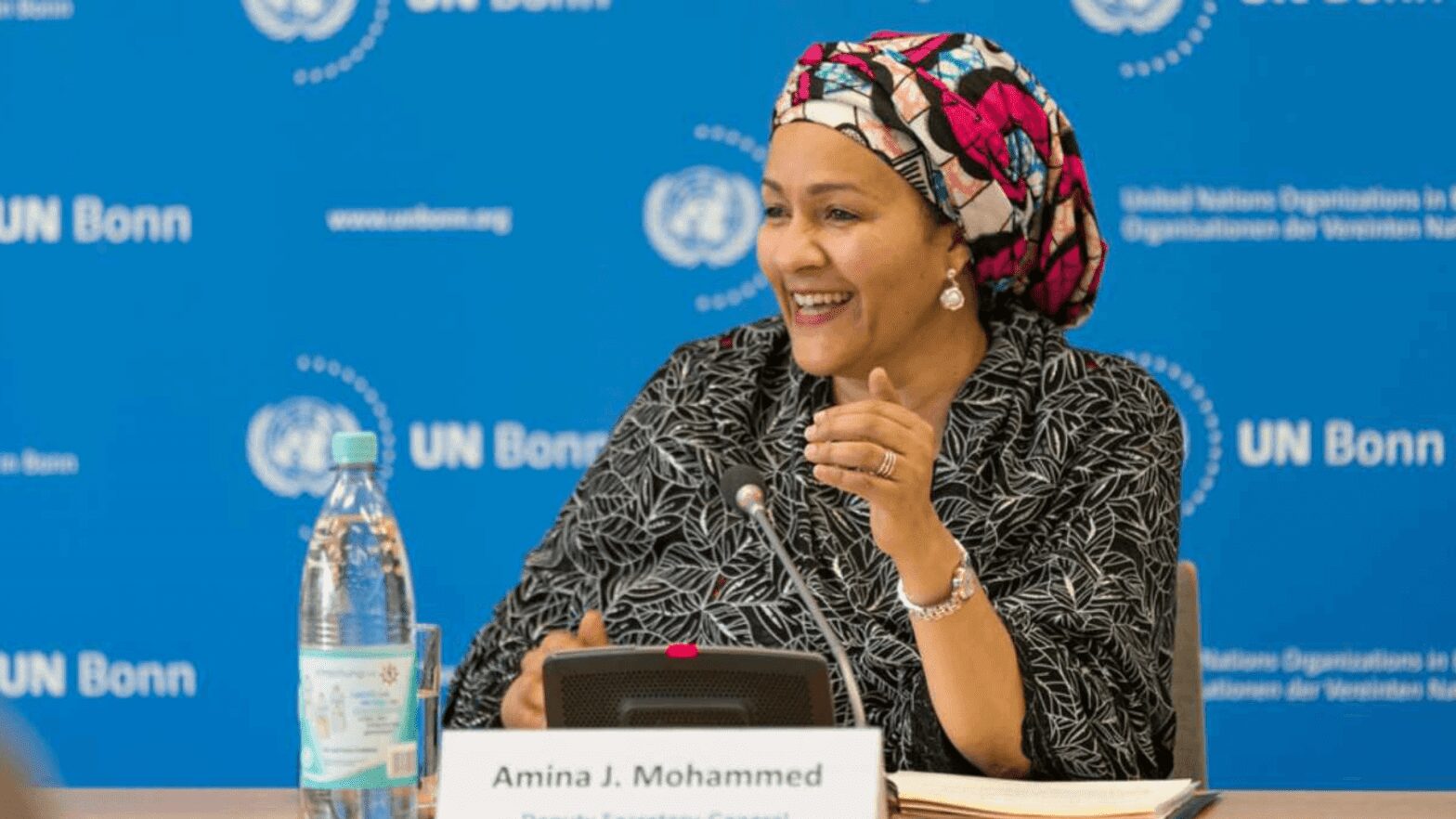The National Electric Energy Plan (PNE) is a long-term strategy established by a country's government for the electricity sector. It seeks to define goals, guidelines and actions to ensure the safe, sustainable and affordable supply of electricity for the population, industry and other sectors of the economy.
According to the PNE, it functions as “a living instrument that dialogues with different possibilities and environments of uncertainty and that can indeed serve as a guide in the current situation of the crisis”.
In the case of Brazil, the National Electric Energy Plan is prepared by the Ministry of Mines and Energy together with the Energy research company (EPE) and other related bodies. The plan covers a medium to long term time horizon, usually with projections for the next 10 to 20 years.
The PNE includes a detailed analysis of demand and supply of electricity, taking into account factors such as economic growth, population, technological changes and environmental policies. Based on these projections, the needs for expanding the generation, transmission and distribution capacity of electric energy are identified, as well as the energy sources to be used.
To put this strategy into practice, it is necessary to draw up an Action Plan, which will define the measures that will be taken to achieve the objectives established in the PNE. In addition, there is also a Strategic Action Monitoring Plan, which monitors the results and impacts of the implemented measures.
This initiative aims to ensure a sustainable development of the energy sector, taking into account economic, social and environmental aspects. With this, it is expected that the country will have a more diversified and cleaner energy matrix, in addition to promoting job creation and economic growth.
The plan also includes aspects related to the diversification of the energy matrix, promoting the use of renewable sources, such as wind, solar, biomass and hydroelectric energy. In addition, the PNE can establish guidelines for energy efficiency, encourage research and technological development in the electricity sector, promote energy auctions and define price and tariff policies.
The PNE aims to guarantee the country's energy security, reduce dependence on non-renewable sources, promote environmental sustainability and ensure universal access to electricity. It serves as a guideline for the development of the electricity sector, providing a roadmap for investment in infrastructure and the formulation of appropriate public policies. It is important to emphasize that the PNE is a dynamic document and subject to periodic revisions, considering the changes in the energy scenario and the demands of society.
National Electric Energy Plan (PNE) 2030
The final report of the PNE 2030 is a study that aims to guide the expansion of the energy sector in Brazil until the year 2030. The document presents an analysis of the current situation of the sector, identifying the main challenges and opportunities for the future.
The PNE 2030 highlights the importance of public policies that encourage energy efficiency and the reduction of energy consumption, as well as the promotion of research and development of clean and sustainable technologies. In short, the PNE 2030 final report is an important reference for planning and decision-making in the energy sector in Brazil, aiming at sustainable and efficient development.
The National Energy Plan 2030, or PNE 2030, comprises extensive technical research that provides subsidies for the formulation of a long-term strategy for expanding the supply of energy in Brazil. In all, almost one hundred technical notes were produced that analyze different scenarios for the evolution of energy demand and the integrated and sustainable use of available resources.
These studies were conducted by the Energy Research Company (EPE), in partnership with the Ministry of Mines and Energy (MME). The investigations began in January 2006 and, during the following months, the EPE promoted several thematic meetings with renowned professionals and technicians specialized in each of the topics addressed.
The purpose of these meetings was to examine the energy resources available in the country and identify the best strategies to guarantee energy supply in the future, taking into account aspects such as energy efficiency and sustainability. Based on these analyses, the PNE 2030 presents a complete overview of the energy sector in Brazil and proposes effective measures to guarantee the country's sustainable development.
The PNE 2030 comprises four main study modules:
The first module is the macroeconomic one, which established long-term scenarios for the world and national economy. The second module is the demand module, which took into account sectoral, demographic and energy conservation assumptions to project final energy consumption. The third module is supply, which analyzed the energy resources available in the country, taking into account aspects such as technology, prices, environment, competitiveness of sources and impacts of regulation. Based on these studies, alternatives were formulated for the expansion of energy supply in view of the expected evolution of demand.
The fourth module is the final studies, which integrate analysis of supply and demand, including a reassessment of initial energy consumption projections in the light of political, strategic and institutional aspects.
The objective of these studies is to provide subsidies for the formulation of a long-term strategy for the expansion of the energy sector in Brazil, guaranteeing the country's sustainable development. Based on these analyses, effective measures were proposed to guarantee energy supply in the future, taking into account aspects such as energy efficiency and diversification of the energy matrix. The following data were evaluated within the report:
The Brazilian energy matrix will show greater diversification, with four energy sources – oil, hydropower, sugarcane and natural gas – forecast to represent 75% of the domestic energy supply in 2030. The share of renewable sources in the energy matrix should remain around 45% in 2030. Despite the expected increase in per capita energy consumption, a drop in energy intensity is expected over the course of the study. However, emissions per unit of consumed energy would increase by 6.5% in 2030 compared to 2005 values.
Energy imports will focus on mineral coal for the steel industry, natural gas (via gas pipelines and LNG) and the Paraguayan portion of the Itaipu plant. In the electricity sector, growth in total consumption is expected, reaching levels between 850 and 1,250 TWh in 2030, depending on the macroeconomic scenario. The supply of hydropower will continue to account for around 70%, while conventional thermoelectric generation (nuclear, natural gas and mineral coal) will expand its share from 7% to approximately 15%. Non-hydraulic renewable sources, such as sugarcane biomass, wind energy and urban waste, will also show significant growth, accounting for more than 4% of the domestic electricity supply.
Regarding oil production, it is estimated that it will reach 3 million barrels per day in 2030, while the production of oil derivatives will reach 3.7 million barrels per day, driven by the expansion of projected refining capacity. A surplus balance is expected for diesel oil, due to the expansion of refining concentrated in medium and light derivatives, in addition to the increase in the supply of biodiesel. In short, oil and derivatives will represent around 30% of the national energy matrix in 2030. Regarding natural gas, net production should reach 180 million m³ per day in 2030, with a need to import 70 million m³ per day to meet the projected demand. As a result, the share of natural gas in the Brazilian energy matrix will reach 15%.
The competitiveness of sugarcane for energy purposes justifies a significant expansion in ethanol production, reaching around 66 billion liters in 2030. The use of ethanol will reduce the demand for gasoline.
Among the plans and actions aligned with the PNE 2030. In recent years, Brazil has stood out in several initiatives and projects in the energy sector. Some of these milestones include the installation of the Madeira and Belo Monte hydroelectric dams, two large hydroelectric power plants that provide a significant amount of renewable energy to the country.
In addition, socio-environmental studies were carried out at the Bem Querer and Castanheira Hydroelectric Plants (UHEs), in order to assess the environmental and social impacts of these undertakings. In the field of thermoelectric plants, Law 11,909/2009, known as the Gas Law, was enacted, which establishes guidelines for the natural gas sector in Brazil. This legislation led to the creation of programs such as Gás para Crescer and Novo Mercado de Gás, with the objective of promoting the natural gas industry in the country.
In the oil and natural gas production segment, the discoveries of the pre-salt geological layer have been of great importance for Brazil. These discoveries boosted oil and natural gas production in the country, strengthening the sector and contributing to the national economy.
In the field of non-water renewable sources, the Renovabio Program stands out, which aims to encourage the production and use of biofuels in the country. In addition, ANEEL Resolution 482/2012 and subsequent revisions establish guidelines for microgeneration and distributed minigeneration of energy, driving the adoption of solar and wind energy systems by residential and commercial consumers.
Energy efficiency has also received attention in Brazil. The National Energy Efficiency Plan and Law 13,280/2016, which allocates resources to the National Energy Conservation Program (PROCEL), are examples of initiatives to promote energy efficiency in various sectors of the economy. In addition, the Electrical Energy Industry Government Council (CGIEE) has a regulatory agenda that covers aspects such as air conditioning, reconditioned engines and buildings. There is also a pilot project for an Energy Efficiency Auction in Roraima, seeking to encourage the adoption of efficient practices and technologies in that region.
These initiatives and milestones reflect Brazil's commitment to the diversification of the energy matrix, the promotion of renewable sources, the strengthening of energy efficiency and the sustainable development of the energy sector.
The Questions of Interest of the PNE 2050
The final report of the National Energy Plan 2050 (PNE 2050) is a study that aims to guide the expansion of the energy sector in Brazil until the year 2050. The document presents an analysis of the current situation of the sector, identifying the main challenges and opportunities for the future.
The final report of the 2050 National Energy Plan (PNE 2050) is the consolidated result of a series of long-term studies conducted by the Energy Research Company (EPE), under guidelines from the Ministry of Mines and Energy (MME). These studies were carried out over the last few years and had the participation of society in discussions about the perspective for building the long-term strategy of the energy sector in Brazil.
In addition to the final report, the PNE 2050 Strategy Design phase comprises a series of analyzes and studies that contextualize the perspective for building the planner's long-term strategy. The objective of these studies is to provide subsidies for the preparation of the Action Plan, which will define the measures that will be taken to achieve the objectives established in the PNE 2050.
The elaboration of the PNE 2050 is an important initiative to guarantee a sustainable development of the energy sector in Brazil, taking into account economic, social and environmental aspects. With this strategy, it is expected that the country will have a more diversified and cleaner energy matrix, in addition to promoting job creation and economic growth.
Among the study's main conclusions, the importance of diversifying the country's energy matrix stands out, with an increased share of renewable sources, such as wind, solar and biomass energy. In addition, the report points to the need to invest in energy infrastructure, to guarantee energy supply throughout the national territory.
The PNE 2050 also highlights the importance of public policies that encourage energy efficiency and the reduction of energy consumption, as well as the promotion of research and development of clean and sustainable technologies. In short, the PNE 2050 final report is an important reference for planning and decision-making in the energy sector in Brazil, aiming at sustainable and efficient development.
Report Data for 2030 and 2050
Viable issues for the 2030 and 2050 PNEs are the demands for improving integrated planning processes for generation and transmission systems. In addition, there is the promotion of actions to integrate the transmission system with the distribution networks. In this scenario, it is possible to introduce more efficient and effective locational signaling mechanisms, in addition to promoting actions to optimize the use of existing transmission systems.
For Gas, there is the sharing of characteristics of stability of natural gas production and flexibility of electric generation for different models. With regard to oil derivatives, it is necessary to articulate with Government bodies with measures and actions to promote the competitive process in the downstream. For the transport sector there is the preparation of charging infrastructure.
According to studies carried out by the National Energy Plan (PNE), Brazil has an energy potential of almost 280 billion toe by the year 2050. This value is made up of non-renewable resources, which add up to around 21.5 billion toe, and renewable resources, which can generate up to 7.4 billion toe annually over 35 years.
Considering the growth in energy demand in the country, which should go from 300 million toe to around 600 million toe, the forecast trajectory for the next 35 years represents a total accumulated energy demand equivalent to just under 15 billion toe.
Renewable resources represent one of the biggest challenges and opportunities for the energy sector, with a significant potential estimated at around 245 billion tons of oil equivalent (toe) by the year 2050. This potential is composed of several sources, including hydroelectric power plants (UHE) that can impact protected areas, the use of wind energy in offshore regions located up to 200 miles from the coast, except areas within 10 km, and the use of photovoltaic (PV) solar energy offshore in areas with irradiation solar energy in the range of 6.5 to 6.8 kWh/m².day.
An interesting point to be highlighted is the technical potential of floating photovoltaic generation, estimated at approximately 4,443 TWh per year, according to calculations carried out by Strangueto in 2016. This innovative technology allows the installation of solar panels on floating platforms in bodies of water, which can be especially advantageous in regions with limited land availability.
These projections and estimates reflect Brazil's ongoing effort to seek cleaner and more renewable energy sources, in line with sustainable development goals and climate change mitigation. It is important to point out that these values could be even higher if more detailed studies of the potential of energy resources are carried out in the coming years. The PNE highlights the importance of investing in research and technology to make the most of the country's energy potential, ensuring sustainable and efficient development of the energy sector in Brazil.
Strategic Guidelines for the PNE 2050
The National Energy Plan 2050 (PNE 2050) establishes several strategic guidelines for the energy sector in Brazil, aiming at a sustainable and efficient development. Some of the main guidelines are:
- Continuing to focus on the renewable energy sector, expanding the share of sources such as wind, solar, biomass and hydroelectric energy;
- Create low-carbon solutions for the energy transition, reducing greenhouse gas emissions;
- Maintain emissions from the coal-fired power plant at the current level;
- Carry out energy recovery work from urban solid waste (RSU) and agriculture;
- Use oil resources, expanding exports;
- Implement electrification in the transport sector, encouraging the use of electric and hybrid vehicles;
- Invest in bioenergy and biotechnology, taking advantage of the country's natural resources;
- Build new nuclear power plants, aiming at diversifying the energy matrix;
- Structuring the integration of wind and solar photovoltaic sources in the electrical system;
- Stimulate the development of the natural gas market, taking advantage of pre-salt reserves;
- Continue to take advantage of hydroelectric resources, including Small Hydroelectric Plants (PCHs);
- Focus on energy efficiency, encouraging the reduction of energy consumption in all sectors of the economy;
- Increase and upgrade transmission assets, ensuring the safety and reliability of the electrical system;
- Replace diesel generation in isolated systems and modernize the existing hydroelectric park, with a view to improving efficiency and reducing pollutant emissions.
Goals for the 2050 National Plan
The National Energy Plan 2050 (PNE 2050) establishes several goals for the energy sector in Brazil until the year 2050. Some of the main goals are:
- Increase the share of renewable sources in the country's energy matrix, reaching a share of 85% in 2050;
- Reduce greenhouse gas emissions by 95% by 2050 from 2005 levels;
- Increase energy efficiency in all sectors of the economy, with a reduction of 10% in final energy consumption by 2030 and 20% by 2050;
- Expand the supply of electricity, with the installation of new hydroelectric, wind, solar and biomass plants, in addition to the development of energy storage technologies;
- Guarantee universal access to electricity throughout the national territory;
- Promote research and development of clean and sustainable technologies, encouraging innovation and competitiveness in the energy sector in Brazil.
These goals reflect the commitment of the PNE 2050 with a sustainable development of the energy sector in Brazil, taking into account economic, social and environmental aspects.
The Importance of the PNE for Energy Efficiency: Paths to a sustainable future
Looking to the future, estimates indicate a notable transformation in the Brazilian energy matrix by 2030. In this scenario, four types of energy will take center stage, representing approximately 77% of total consumption. In addition to traditional oil and hydraulic energy, sugarcane and natural gas are gaining prominence, while the importance of firewood will be reduced.
For 2030, a situation is projected in which four types of energy will be needed to explain 77% of total consumption: in addition to oil and hydraulic energy, sugarcane and natural gas enter the scene, while the relative importance of firewood is reduced.
The final report of the 2050 National Energy Plan (PNE 2050), on the other hand, recognizes the existence of two types of movement in relation to energy efficiency. The first is autonomous progress, which refers to the natural dynamics of increased efficiency, motivated both by actions intrinsic to each sector and by conservation programs and actions already in use in the country. The second type of movement is induced progress, which refers to the establishment of specific programs and actions, oriented towards certain sectors and reflecting public policies.
The studies carried out indicate a clear trend towards greater diversification of the Brazilian energy matrix. In the 1970s, only two types of energy (oil and firewood) accounted for 78% of energy consumption in the country. In 2000, this number increased to three types of energy (oil, firewood and hydraulic energy), which accounted for 74% of total consumption. According to the scenario outlined for 2030, which takes into account a population of over 238 million inhabitants, it is estimated that total primary energy demand (domestic energy supply) will be around 555 million toe. This estimate considers economic and population growth projections, as well as public policies and technological trends for the energy sector in the country.
Total electricity consumption in 2030 is forecast at 1,085.7 TWh, which represents an increase of 4.3% per year since 2005. To achieve greater efficiency in energy use, final conservation efforts are determined based on the characteristics of each scenario and their sectoral differences. In other words, the conservation estimates take into account the projections of economic activity in each sector, as well as the public policies implemented to promote energy efficiency.
With a diversified energy matrix and efforts focused on efficiency, Brazil seeks to follow a sustainable path, guaranteeing a reliable energy supply and contributing to the preservation of the environment for future generations.
















